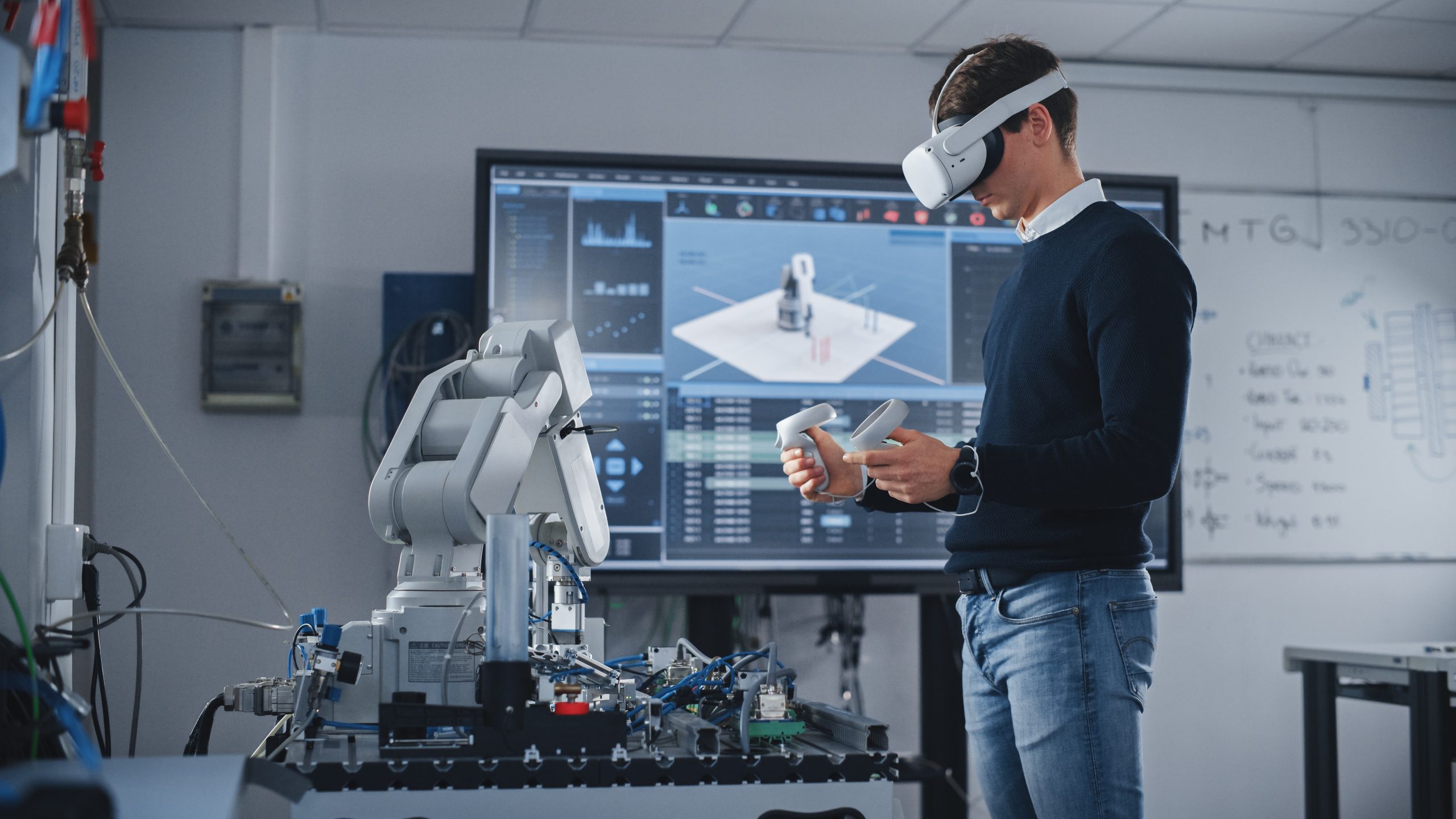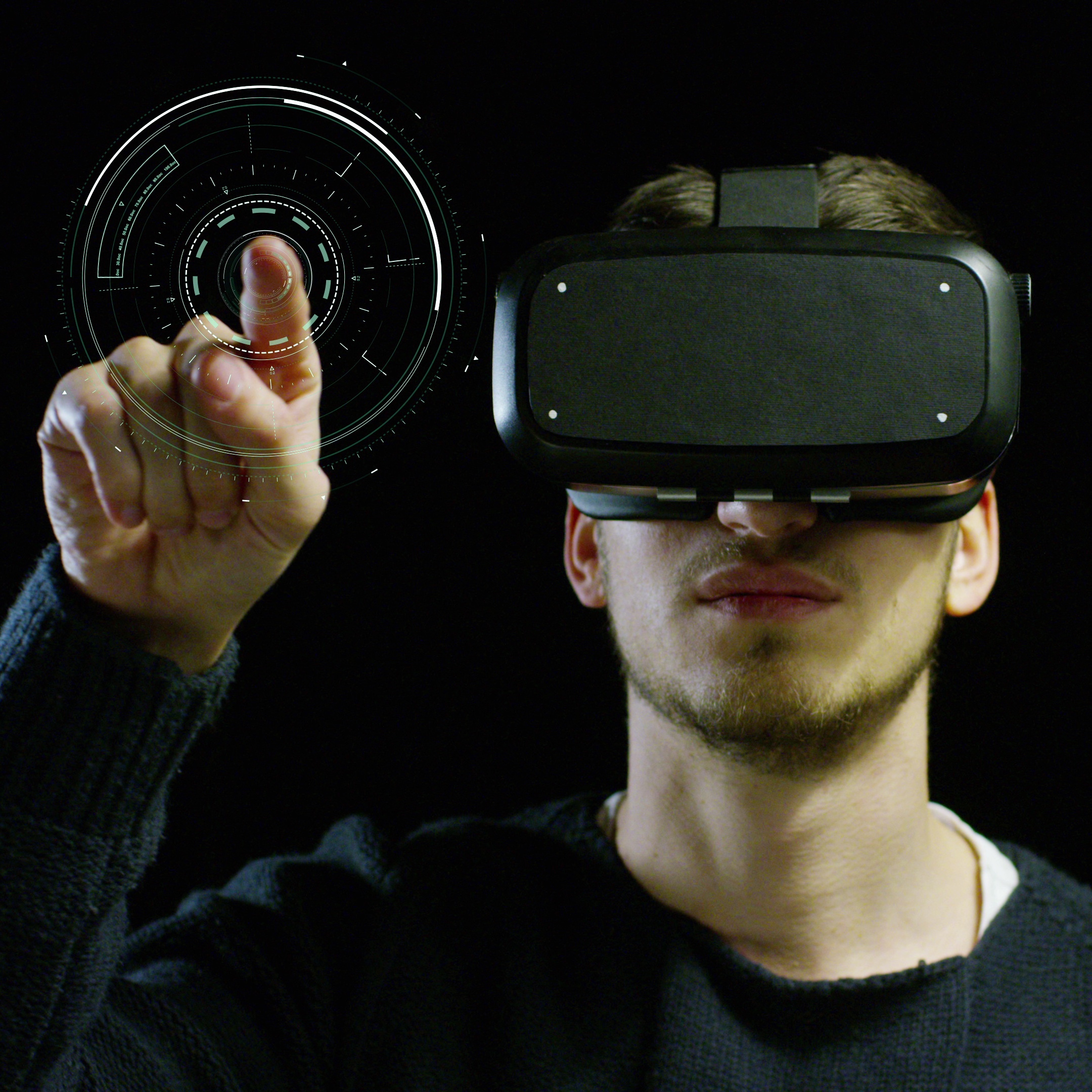VR beyond virtual tours: Business applications across six sectors
Do you remember (or rather, can you imagine) what marketing was like before email came along? Or what a brain-melting hassle it could be to try and remember the name of a movie star when you could only recall one of their films before you had a smartphone in your hand 24×7?
Remember proofing your emails before Grammarly came along? And the best of them all: remember how inconvenient life was before you could “hop on a meet” and share your screen like you do today? Or traveling to the other end of your city for meetings you now handle remotely? Tech has the power to revolutionize sectors and processes overnight, making those who benefit from it wonder how they ever managed without it. VR is no different.
In this blog, we will look at examples from six less-talked-about sectors (beyond tourism, real estate, and retail that are celebrated as top VR applications in 2024). We will also observe the hardware that supports VR experiences and the roadblocks and accelerators in the VR space.
Increasingly popular VR applications in 2024: 6 sectors that are acing VR applicability
Revving Up: VR in the Automotive Industry
Engineers and designers can now effortlessly test vehicle aesthetics and structure using VR, avoiding the high costs of physical prototypes. Major automotive brands like Honda, BMW, and Jaguar Land Rover (JLR) have long adopted VR for design and engineering assessments. This practice gained momentum during the pandemic as an alternative to traditional clay modeling.
This technology saves the automotive industry millions by reducing prototypes and enabling a global design process. For instance, Audi uses Varjo’s VR to see and test every design detail early on, helping them make crucial decisions before tooling begins. Varjo’s Bionic Display provides seamless 3D visualizations, cutting down design cycles and saving time and money.
Beyond design, VR is used in virtual showrooms and test drives. KIA’s VR showroom lets customers explore new models from home, and Vroom offers a similar experience for used cars. Toyota’s VR highlights the dangers of teenage driving and improves safety awareness.
In essence, VR helps designers reduce prototypes, allows customers virtual test drives, and enhances road safety. From Audi’s detailed design sessions with Varjo to KIA’s virtual showrooms, VR is driving the future of the automotive industry.
Building Dreams: VR Transforming Architecture
Virtual Reality allows architects to explore and refine their concepts in immersive, interactive environments. VR technology is transforming how buildings are conceived, developed, and visualized.
Architects are using VR to bring designs to life. Foster + Partners used VR for the Bloomberg European Headquarters in London, enabling virtual walkthroughs that refined the design. Zaha Hadid Architects used VR for 520 West 28th Street in New York, providing clients with immersive 3D experiences for better decision-making and satisfaction.
VR also improves construction. Mortenson Construction used VR for a sports arena, letting workers practice tasks virtually, enhancing efficiency and safety.
The architecture world is buzzing with VR’s potential, from visualizing designs to refining construction. As one of the top VR applications in 2024, VR is reshaping how we create and interact with our built environment.
Art Immersion: VR in Arts and Culture
With VR, you don’t just create life-size artwork – you can be in it. Imagine stepping into a painting and emerging on the other side. One of the most popular VR applications for creating art is Tilt Brush, where artists have painted breathtaking 3D masterpieces. Another standout is Masterpiece Studio, which allows you to draw, sculpt, make, and animate virtual 3D models and sculptures. But there are even more exciting VR applications out there for artists.
Gravity Sketch was initially used by car and shoe designers, but it is now a powerful tool across various industries for creating detailed 3D models.
Quill by Smoothstep enables immersive storytelling through VR illustrations and animations, perfect for pre-visualization and storyboarding.
SculptrVR offers a sandbox for building and manipulating 3D objects, which is ideal for detailed sculptures.
Kingspray Graffiti brings street art into VR, allowing realistic spray simulations in various virtual locations.
Take The VR Museum of Fine Art on Steam, which lets you explore life-sized sculptures and paintings without barriers, providing an interactive museum experience.
Another captivating example is the installation »Berl-Berl« by Danish artist Jakob Kudsk Steensen. This immersive live simulation uses generative audio and video game technology to recreate Berlin’s swampland origins, offering a multi-sensory experience.
VR is revolutionizing arts and culture, making it one of the top VR applications in 2024. From creating to experiencing art, VR opens new creative possibilities.
Future Classrooms: VR in Education
Virtual reality is reshaping education by offering students immersive, hands-on learning experiences accessible from any location. This technology has the potential to level the educational playing field by providing opportunities to learners from diverse backgrounds who may have previously faced limitations.
Take Orewa College in New Zealand, for example. This school has been innovative, first adopting a BYOD (Bring Your Own Device) model and now diving into VR. They use VR in their curriculum with tools like the HP EliteDesk and HTC Vive Pro, making learning interactive and fun. Stanford University’s “Virtual People” course offers VR education across disciplines, enhancing understanding and retention.
But the innovation doesn’t stop there. Stanford University’s “Virtual People” course has taken VR education to a whole new level. Students and instructors spent over 1,000 hours entirely in virtual environments, with plans for even more. This cross-discipline course includes fields like computer science, biology, and art, showcasing how VR can enhance learning in diverse subjects. The immersive experience not only makes learning more enjoyable but also improves retention and understanding.
Then there’s the RTC Antwerpen project collaboration with VirtualSpeech, which aims to equip students with soft skills training through VR, preparing them for future success with practical, immersive experiences.
Incorporating VR in education isn’t just about excitement; it’s about effectiveness. VR improves memory retention and spatial presence, making learning more engaging and impactful.
From virtual field trips to practicing job interviews in safe spaces, VR is transforming education. It’s one of the top VR applications in 2024, offering new ways to teach, learn, and achieve academic success.
Mind and Body: VR for Holistic Wellbeing
VR can also be used as a treatment for mental health issues, with Virtual Reality Exposure Therapy thought to be particularly effective in the treatment of PTSD and anxiety. There are many other ways spending time in VR can have therapeutic benefits.
For example, Craig Mason, a mental health advocate and CEO at Raise Health, highlights several success stories of technology in mental health. He briefs about successful platforms like Talkspace, which connects users with therapists via secure messaging, reducing depression and anxiety symptoms.
Other popular VR applications include VR therapy for PTSD, showing significant symptom reduction in military personnel. Mindfulness apps like Headspace offer guided meditations and stress reduction exercises, enhancing emotional regulation and overall well-being.
Moreover, the US FDA approved EaseVRx, a prescription-use immersive VR system designed to reduce chronic pain. This system uses cognitive behavioral therapy and other behavioral principles to help patients manage pain without relying on opioids. The immersive VR sessions incorporate deep relaxation, attention-shifting, and other techniques to provide significant pain relief.
In the educational context, VR also promotes holistic well-being. For instance, Orewa College in New Zealand is utilizing VR to create a more engaging and supportive learning environment. By integrating VR into their curriculum, students can participate in projects like Google Sketch-up and Unity, fostering creativity and reducing stress through immersive, hands-on experiences.
These examples illustrate how VR is transforming holistic well-being, making it one of the top VR applications in 2024. From mental health therapy to mindfulness and pain management, VR is offering innovative solutions that enhance emotional and physical health. As VR technology continues to evolve, its potential to improve holistic well-being will only grow, providing new ways to support and enrich our lives.
Game Changer: VR in Live Sports
If you’ve ever been to a live game, you know how vastly improved it is in terms of hair-raising experience compared to an on-screen experience. Moreover, venues are limited, tickets are expensive, and let’s not get into the traffic in and out. In other words, there is demand, but there are also obstacles. All of this means that viewers are missing out on the real thing, while organizers are missing out on greater ticket sales revenue, a wider reach for their sponsors, and so on.
VR is completely changing how we enjoy sports. It’s one of the top VR applications in 2024, and it’s taking off fast. Imagine watching the NBA, feeling the energy of the crowd like you’re courtside. Or reliving the epic UEFA Champions League final in 360-degree VR, seeing every play from any angle.
Picture this: a ‘virtual Olympics watch party‘ with friends from around the world, sharing the excitement together in a digital space. This is the future of sports, and it’s happening now.
Final Thoughts
We’ve observed the changes VR is creating in different fields, such as automotive and architecture, to education, arts, and live sports. Among these, one of the most popular VR applications will become a game changer in 2024.
But before you jump into the VR world, it’s essential to be smart. Investing in VR isn’t only about having the newest technology; it means making certain your investment gives actual, physical outcomes. Think about the required hardware and software improvements for coming years and be mindful of ROI.
This is the place where magineu steps in. We are here to help you navigate the fast-changing VR sector, making sure that your VR activities match up with your business objectives. Using our knowledge, VR becomes a tactical instrument for advancing your business.
If you are prepared to elevate your business with VR, let us achieve this objective jointly.



